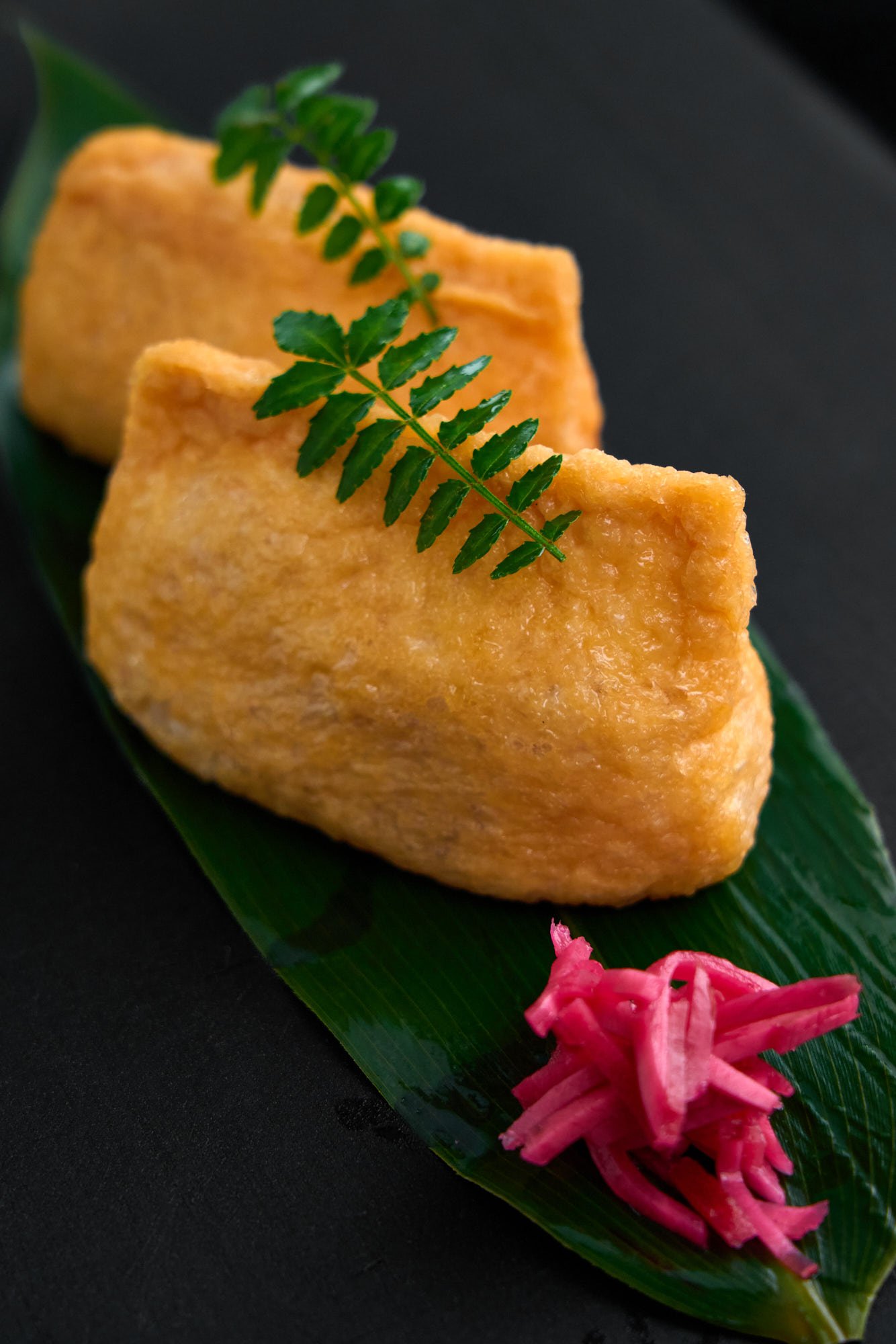
Sweet, savory, and endlessly satisfying, inari sushi is a beloved Japanese dish made by stuffing vinegared rice into pockets of seasoned fried tofu called inari. The tofu pouches are simmered in a sweet-savory broth until they're juicy and full of umami, then filled with bright, tangy sushi rice that balances the richness of the tofu wrapper. I like adding a bit of pickled ginger and toasted sesame seeds for extra texture and flavor. Growing up, my mom would always make this traditional sushi for special occasions, such as birthdays and family gatherings, and it has become one of my go-to comfort foods. Here's what makes my inari sushi recipe special.
Jump to:
Why This Recipe Works
- Rolling the aburaage helps separate the layers inside the fried tofu, making it easier to open into clean pouches without tearing. This step is crucial if you're using the denser aburaage (fried tofu).
- Boiling and rinsing the tofu pouches removes excess oil and softens the skins, allowing them to better absorb the sweet-salty simmering liquid.
- Taste contrast makes every bite crave-worthy. Reducing the sugar in the sushi rice makes it more tangy, cutting through the sweet richness of the tofu and making each mouthful pop with flavor.

Ingredients
- Aburaage (thin fried tofu) — When sliced in half, aburaage forms a pouch that can be stuffed. It soaks up the seasoning broth and provides that signature juicy, sweet-savory bite. Any Japanese supermarket should carry it, as well as larger Asian markets.
- Sake — Some recipes call for using dashi, but I prefer the clean flavor and ample umami that sake provides. You can read more about how to pick sake for cooking here. The alcohol is boiled off before seasoning the inari; however, if you can't find it, you can use kombu or mushroom dashi as an alternative.
- Sugar — Balances the soy sauce in the inari wrapper seasoning and contrasts the vinegar in the filling. I like to use evaporated cane sugar because it adds a wonderful caramel flavor to the seasonings.
- Soy sauce — Provides salt and umami to season the tofu wrappers. Be sure to use a Japanese soy sauce, such as Kikkoman.
- Japanese rice — Short-grain rice is essential for making Japanese cuisine. The high ratio of amylopectin (a type of starch) makes the grains stick together so the sushi will hold its shape.
- Rice vinegar — Brightens the sushi seasoning and balances the sweetness of the tofu pockets. If you can't find rice vinegar, any mild fruity vinegar, like apple cider vinegar, will work.
- Gari (finely chopped) — Adds a tangy crunch and a bit of heat that cuts through the richness of the fried tofu pouch.
- Toasted sesame seeds — Provides a nutty aroma and textural contrast.
How to Make Inari Sushi
Start by cooking the rice. Rinse it thoroughly, then cook it in a rice cooker with slightly less water than usual. This keeps it from getting soggy when we add the sushi seasoning.
Next, prep the aburaage. Use a rolling pin to flatten each piece from the center outward—this helps separate the layers so they open into neat pouches. Cut them in half, then gently open the cut edges to form pockets. Boil them for a minute to remove excess oil, then transfer to cold water. Once cool, press out the water and oil by hand.
Wash out the pot and add the water, sake, sugar, and soy sauce. Bring it to a boil for 90 seconds to cook off the alcohol, then add the aburaage in an even layer. Cover with a drop lid and simmer for 10 minutes. Remove the lid and continue cooking until most of the liquid evaporates, but be careful not to let the wrappers burn. Turn off the heat, replace the lid, and let them cool.
While they cool, mix the vinegar, sugar, and salt until dissolved. Once the rice is done, transfer it to a large bowl and drizzle with the sushi vinegar. Use a paddle to gently fold it in, breaking up any clumps. Add the chopped ginger and sesame seeds, folding until evenly distributed. Keep the rice covered with a damp dishcloth or paper towels to keep it from drying out.
To shape the inari, prepare a small bowl of tezu (water with a splash of vinegar). Wet your hands with it, then form the rice mixture into small cylinders, slightly shorter than your tofu pocket. Alternatively, you can use plastic wrap to do this to prevent the rice from sticking to your hands. Drain off any extra liquid from each pouch, open it up, and gently tuck in a sushi rice ball. Fold the open ends over each other and set the inari down firmly on a flat surface with the flap side down to stand it up. These pockets tear easily, so if the ball doesn't fit, reshape it so it's shorter and rounder.
Variations

- Gomoku Inari (五目いなり寿司) — A specialty of Ibaraki prefecture, the inari wrappers are stuffed with gomoku gohan instead of sushi rice.
- Tsugaru Inari (津軽いなり) — From the Tsugaru region of Aomori prefecture. In this version, mochi rice is mixed with a sweet seasoning and chopped benishoga (red pickled ginger) before being stuffed into the inari wrappers. It creates a festive filling, so these inari are usually presented with the open end up.
- Kazari Inari (飾りいなり) — While inari isn't known for its looks, this variation literally flips the script, leaving the pouch open and topping it with colorful ingredients. Common toppings include kinshi tamago (shredded egg), cucumber slices, edamame, or even raw fish.
- Inari Maki (いなり巻き) — Instead of cutting the aburaage into pouches, it can be opened up into a sheet by cutting off three sides. Then it's used like nori to make sushi rolls with the inari serving as the wrapper.
Serve This With

To round out your Japanese meal, pair it with a silky chawanmushi for a warm, savory contrast. Consider making a couple of side salads, such as a creamy kani salad, a refreshing cucumber and wakame sunomono, or a savory spinach ohitashi, to balance out your meal. If you're packing bento boxes, inari sushi plays well alongside chicken karaage (or vegan tofu karaage). My ridiculously flavorful garlic tofu steak is another great option to add more protein to your bento lunch.
📖 Recipe


Equipment
Units
Ingredients
For Inari Wrappers
- 6 aburaage (thin fried tofu)
- 1 cup water
- ¼ cup sake
- 3 tablespoons sugar
- 2 tablespoons soy sauce
For Sushi Rice
- 300 grams Japanese short-grain rice
- 4 tablespoons rice vinegar
- 2 tablespoons sugar
- 1 teaspoon salt
- 40 grams gari (finely chopped)
- 1 tablespoon toasted sesame seeds
Instructions
- Cook 300 grams Japanese short-grain rice (2 rice cooker cups) in a rice cooker, reducing the water by about 3 tablespoons. If you're cooking it on the stovetop, check out my how to cook rice tutorial.

- Use a rolling pin to roll 6 aburaage from the center out toward the edges. This helps separate the layers by releasing the trapped air, making them easier to open into pouches.

- Cut each aburaage in half, then gently open the cut ends to form pockets.

- Bring a large pan of water to a rolling boil and add the tofu pockets. Swish them around gently for about a minute to help release excess oil.

- Transfer the aburaage to a bowl of cold water to rinse and chill.

- Stack the pockets and press them between your hands to squeeze out as much water and oil as possible.

- Rinse out the pot, then combine 1 cup water, ¼ cup sake, 3 tablespoons sugar, and 2 tablespoons soy sauce. Bring it to a full boil and let it boil for about 1½ minutes to burn off the alcohol.

- Add the tofu pockets in an even layer and cover with a drop lid.

- Lower the heat to maintain a gentle simmer and cook for 10 minutes.

- Once the time is up, remove the drop lid and continue simmering until most of the liquid has evaporated, but be careful not to let the wrappers burn. Turn off the heat, replace the drop lid, and let the wrappers cool to room temperature.

- In a bowl, combine 4 tablespoons rice vinegar, 2 tablespoons sugar, and 1 teaspoon salt. Stir until fully dissolved.

- When the rice is done, transfer it to a large, non-reactive bowl or sushi oke. Drizzle the sushi vinegar evenly over the rice.

- Using a rice paddle or spatula, gently fold in the seasoning. Use the edge of the paddle to gently break up clumps and distribute the vinegar evenly.

- Add 40 grams gari and 1 tablespoon toasted sesame seeds to the rice, and fold them in until evenly mixed.

- Prepare a bowl of water with a splash of rice vinegar—this is called tezu, and it keeps the rice from sticking to your hands.

- Weigh the cooked rice (it should be around 775 grams) and divide by the number of inari wrappers you have. For 12 wrappers, that's about 65 grams per pouch.

- Wet your hands with tezu and shape each portion of rice into a short cylinder, slightly narrower than the width of your tofu pouch. Repeat with the remaining rice.

- To fill the inari, shake off any excess liquid from the tofu skin and gently open the pocket. Slide the rice inside, then fold the open ends over to seal. If the rice doesn't fit, reshape it into a smaller cylinder. Repeat with the rest of the wrappers.

Nutrition Facts
FAQs
Inari sushi is a type of Japanese sushi made by stuffing vinegared rice into pockets of tofu that have been simmered in a sweet-savory broth. But there’s a story behind the name, too. It’s said to be named after Inari Ōkami, the Shinto deity of rice, prosperity, and agriculture. According to tradition, Inari’s messengers are foxes (kitsune), and legend has it they have a special fondness for fried tofu. That same connection gives us kitsune udon, a comforting bowl of noodle soup topped with the same sweet tofu wrappers used for this sushi.
In Japanese, “sushi” often becomes “zushi” in compound words due to a sound change called rendaku, which voices the first consonant of the second word. This means inari sushi is actually pronounced inari zushi (ee-NAH-ree-zoo-shee).
Inari sushi is often vegan, but some recipes call for simmering the tofu in dashi, which can contain fish. In my recipe, the tofu pockets are seasoned with just water, sake, soy sauce, and sugar—all plant-based.







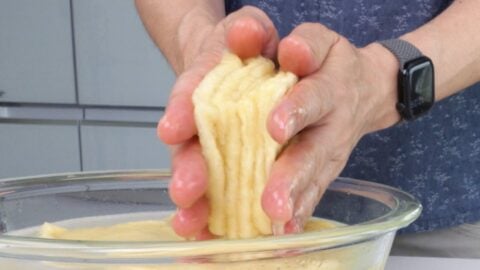



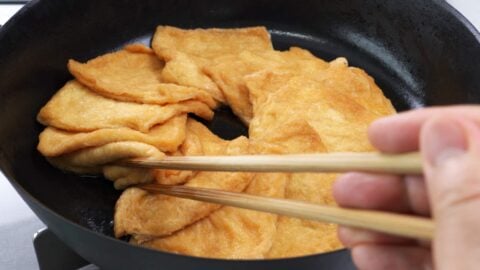

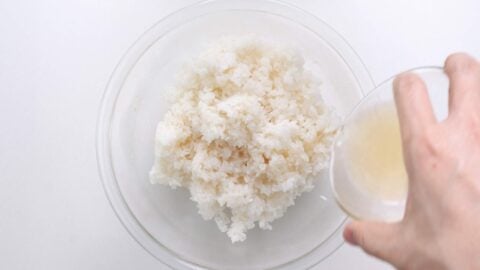

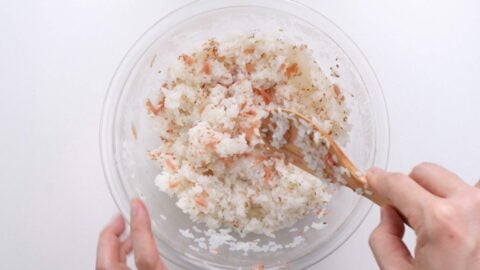
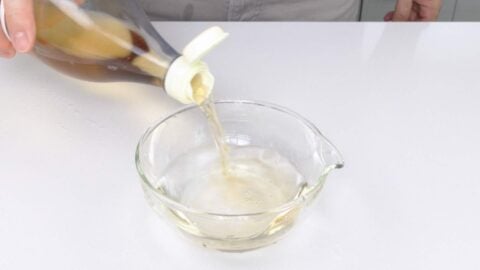
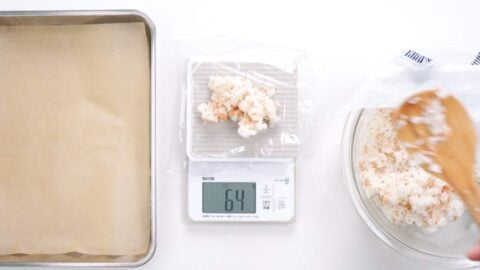
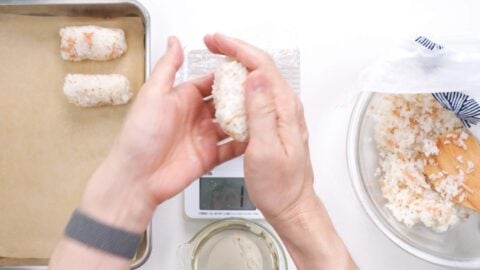
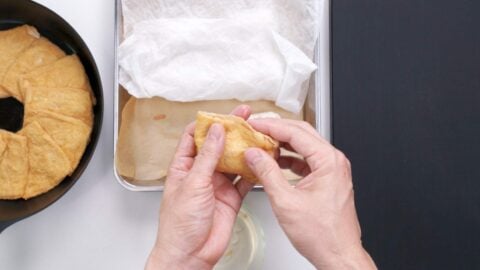
Comments
No Comments